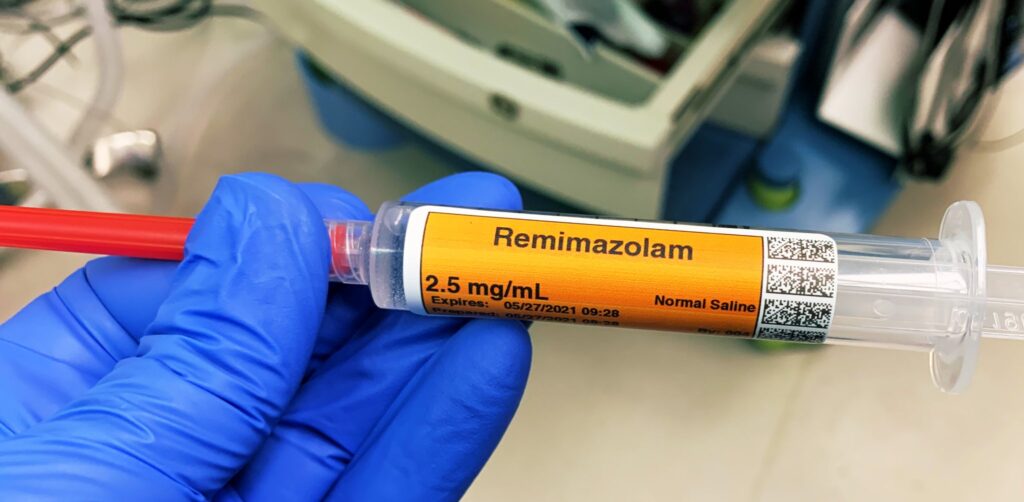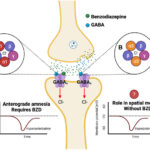Benzodiazepines are frequently utilized in general anesthesia and procedural sedation due to their potent anxiolytic, amnestic, and sedative effects. Agents such as midazolam and diazepam are preferred for their rapid onset and short duration of action. However, the prolonged sedative effects in some patients necessitate pharmacological reversal, particularly in cases where rapid postoperative recovery is critical.

Clinical Indications for Reversing Benzodiazepine Anesthesia
Reversal of benzodiazepine-induced anesthesia is indicated in:
- Delayed emergence from anesthesia
- Postoperative respiratory depression
- Unintended deep sedation
- Immediate cognitive recovery required (e.g., outpatient settings)
- Allergy or adverse reaction to benzodiazepines
Timely reversal enhances patient throughput, improves safety, and reduces post-anesthesia care unit (PACU) burden.
Flumazenil: The Specific Antagonist for Benzodiazepine Reversal
Mechanism of Action
Flumazenil is a selective benzodiazepine receptor antagonist that competitively inhibits benzodiazepine activity at the GABA-A receptor, restoring neuronal excitability and consciousness.
Pharmacologic Properties of Flumazenil
- Onset of action: 1–2 minutes
- Peak effect: 6–10 minutes
- Duration: 30–60 minutes
- Half-life: ~40–80 minutes
Shorter than most benzodiazepines, flumazenil may require redosing for sustained reversal, particularly with long-acting sedatives.
Flumazenil Dosing Guidelines in Anesthesia Recovery
| Use Case | Initial Dose | Titration | Max Dose |
|---|---|---|---|
| Adult recovery from anesthesia | 0.2 mg IV over 15 seconds | 0.1–0.2 mg IV every 1 min if needed | Up to 1 mg total |
| Pediatric reversal (>1 year) | 0.01 mg/kg IV | Titrate at 1-min intervals | Max 0.05 mg/kg or 1 mg total |
If no response after 1 mg, further dosing is typically ineffective and alternative causes should be evaluated.
Timing and Technique of Administration
- Administer only after completion of surgical procedure and discontinuation of inhalational agents.
- Ensure stable hemodynamic status prior to reversal.
- Deliver via slow IV push under close respiratory and cardiovascular monitoring.
Contraindications and Cautionary Use of Flumazenil
Absolute Contraindications:
- History of benzodiazepine dependence (risk of withdrawal seizures)
- Concurrent use of pro-convulsant drugs (e.g., tricyclic antidepressants)
- Status epilepticus controlled with benzodiazepines
- Known hypersensitivity to flumazenil
Relative Contraindications:
- Liver dysfunction (delayed metabolism)
- Pregnancy (use only if benefits outweigh risks)
- Patients with elevated intracranial pressure
Monitoring After Reversal in the Post-Anesthesia Setting
Patients must be closely observed for re-sedation, particularly with long-acting benzodiazepines or prolonged infusions. Monitoring includes:
- Respiratory rate and SpO₂
- Heart rate and blood pressure
- Level of consciousness
- Signs of agitation or withdrawal
Minimum recommended observation period: 2 hours following last flumazenil dose.
Risks and Adverse Effects of Flumazenil in Anesthesia
- Seizures, especially in those with undiagnosed benzodiazepine dependence
- Agitation or anxiety
- Hypertension or tachycardia
- Post-reversal nausea and vomiting
Risk is minimized by slow titration, proper patient screening, and avoidance in mixed-drug exposures.
Reversal in Specific Clinical Settings
Outpatient Surgery
- Enables faster recovery and discharge
- Used when midazolam was administered for sedation
- Reversal supports compliance with short stay anesthesia protocols
ICU Sedation Weaning
- In selected cases, flumazenil is used to assess neurologic status in deeply sedated patients
- Should not replace tapering protocols in patients with long-term sedation
Elderly or Hepatically Impaired Patients
- Require lower initial doses and prolonged monitoring
- Flumazenil pharmacokinetics may be altered in hepatic dysfunction
Flumazenil vs. Supportive Emergence Techniques
While flumazenil offers direct reversal, supportive methods such as:
- Stimulus-induced arousal (verbal, tactile)
- Oxygen supplementation and airway support
- Reducing concurrent CNS depressants
…are first-line in many patients and should be used in conjunction with or before flumazenil, when appropriate.
Frequently Asked Questions:
How soon does flumazenil reverse benzodiazepine anesthesia?
Reversal occurs within 1–2 minutes, with peak effect by 10 minutes.
Can flumazenil reverse all sedatives used in anesthesia?
No. It is specific to benzodiazepines and has no effect on opioids, propofol, or inhalational agents.
Is flumazenil safe in all anesthesia patients?
It is safe when used selectively and contraindications are ruled out.
Can re-sedation occur after flumazenil?
Yes. This is common if the benzodiazepine has a longer half-life than flumazenil.
Should flumazenil be used routinely post-surgery?
No. Routine use is discouraged unless there is a clinical need for rapid emergence.
Reversing benzodiazepine-maintained anesthesia is a targeted intervention that significantly enhances recovery in selected patients. Flumazenil, when used appropriately, offers rapid restoration of consciousness and respiratory function. Clinicians must exercise caution, perform thorough patient assessments, and monitor vigilantly for adverse effects or recurrence of sedation. In modern anesthetic practice, the judicious application of flumazenil contributes meaningfully to patient safety, optimized recovery, and efficient post-anesthesia care.

